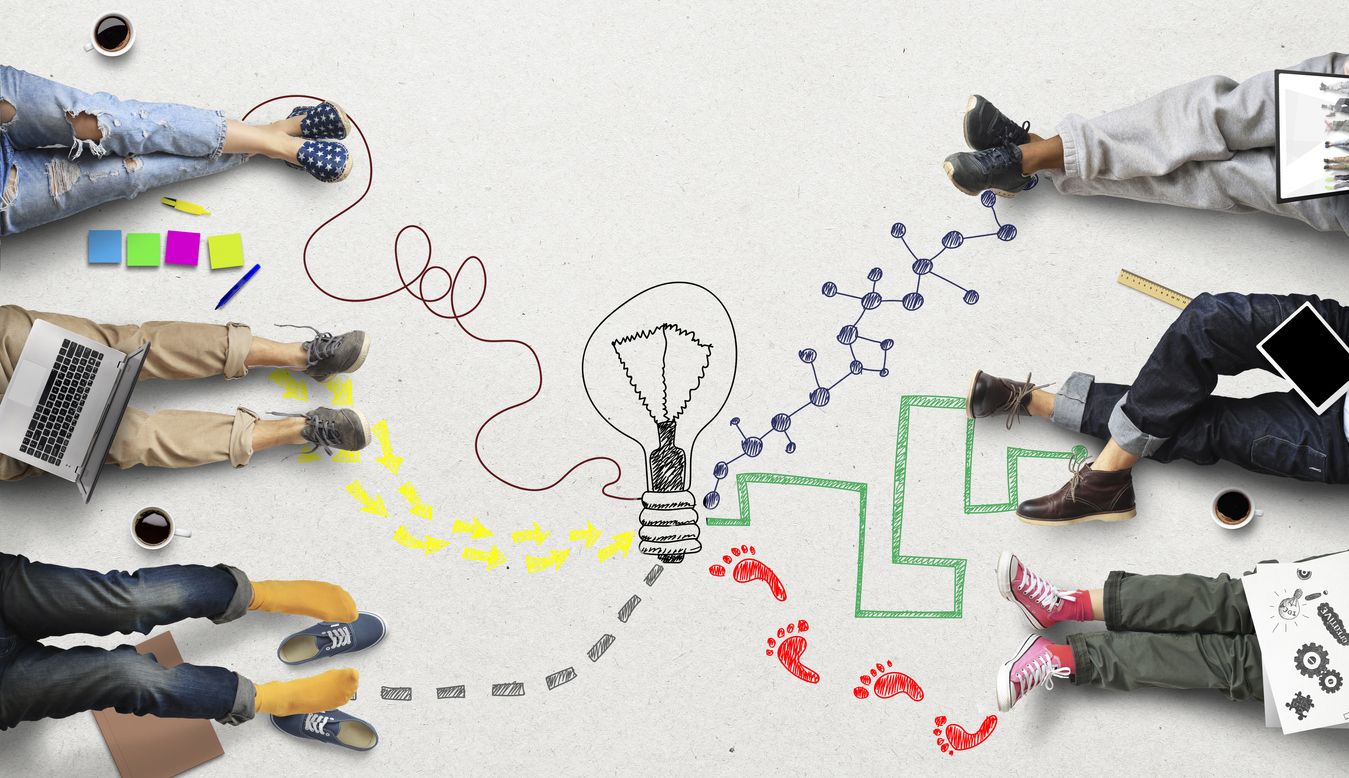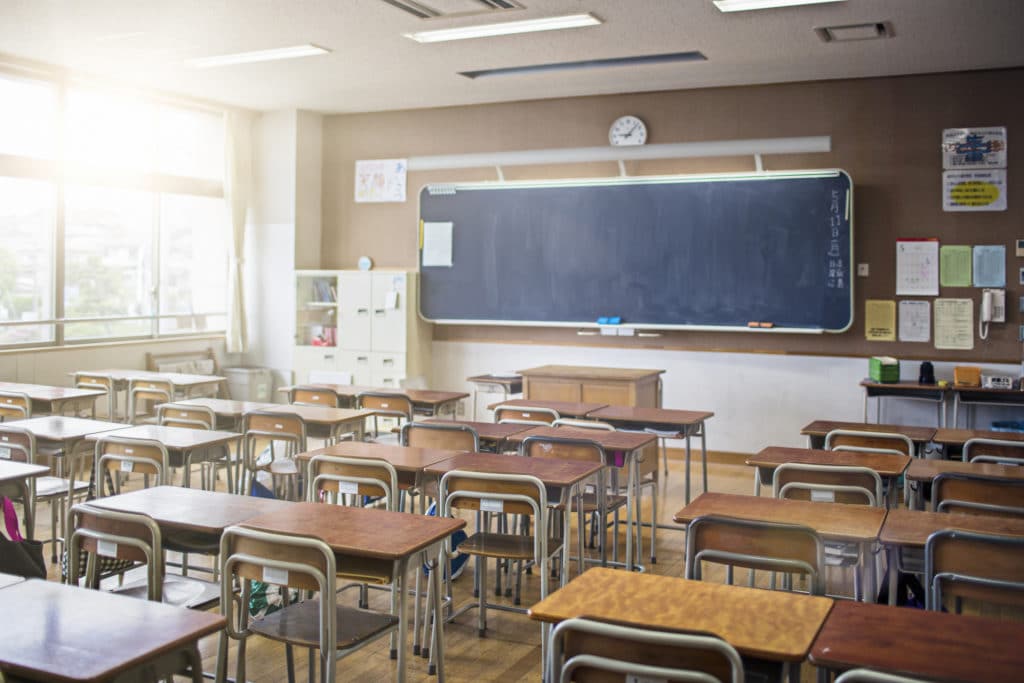Introduction
In June of 2021, we published the report Student-centered learning in Michigan K-12 schools: Factors that impact successful implementation. This study aimed to capture the ways in which Michigan schools are implementing student-centered learning practices along with the factors that impact the successful implementation of such practices.
To inform the report, we interviewed teachers and both building- and district-level administrators from five Michigan school districts: Berrien Springs Public Schools, Hamilton Community Schools, Oxford Community Schools, Portland Public Schools, and the Public Schools of Calumet, Laurium, & Keweenaw.
These school districts belong to a larger network of districts that are early adopters of student-centered learning called the Michigan CoOp (MiCoOp). Led by Lisa Sitkins, these districts are redesigning public school through the collaborative sharing of ideas and resources. Districts leverage each other’s strengths to create a culture of learning that empowers educators to personalize learning for every student. Professional development and networking opportunities within the MiCoOp inspire educators to take action in implementing successful, efficient, and effective learning models.
This mini-series Student-centered learning in Michigan K-12 schools—which is part of our larger student-centered learning blog series—is meant to accompany the report, further explore the practical implications of the research, and celebrate these schools as well as other K-12 schools throughout the state of Michigan who continue to work toward implementing student-centered learning models that include elements of digital learning, personalization, and competency-based learning progressions.
It is our hope that the effective practices, guidance, and advice gleaned from the many innovative educators who so generously gave their time to participate in this study will help other school and district personnel overcome their own barriers to successful implementation of a more student-centered approach to learning.
So, why are schools making learning student-centered? Through our research, several common themes emerged.
While there are many reasons for the “why” behind this work—building student relationships, increasing learner agency, meeting students where they are, opportunities for deeper learning, filling in learning gaps—we found that one reason was consistent: schools aren’t making learning student-centered because it’s easy, they are doing it because in our current model of education, we are not reaching all students.
Equity: Meeting the learning needs of all students
Now—maybe more than ever—teachers are going to find that their classes are made up of students who have very different learning needs. Because of the pandemic and the resulting upheaval to the more traditional model of education that we were used to, learning was disrupted in some way or another for almost every student.
Standards and content had to be prioritized…and reprioritized. Students learned remotely from home, in person at school, or in a hybrid format. And some flexed back and forth between different learning models throughout the past year.
It will be crucial for teachers to determine where students have gaps in their learning. Those students will need time to revisit content and master skills that they may have missed. At the same time, other students will be ready to advance to the next topic, skill, or competency.
However, the idea of students within the same classroom working at different paces, having different learning needs, and/or mastering content at different times isn’t new.
We just haven’t created conditions for learning that accommodate the different learning needs of all students.
Oxford Virtual Academy (OVA) hybrid learning coordinator Jordan Dennis believes that becoming more student-centered will allow them to provide equitable learning experiences to meet students where they are and fill in learning gaps.
Dennis explained, “If we design the educational experience around the student, we can provide more pathways and opportunities for them [students] to overcome those gaps.” When learning is student-centered, educators are targeted and strategic about meeting the learning needs of students.
Every student gets what they need, not just the students who are falling behind.

“If we design the educational experience around the student, we can provide more pathways and opportunities for them [students] to overcome those gaps.”
Increasing student engagement & making learning more meaningful
Think about a project you were involved in at work that you were personally interested in, passionate about, or that you developed and designed yourself.
Was your level of excitement, engagement, and passion for that project more or less than for a project that someone else just handed to you, explaining your involvement? My guess is more.
It’s the same for students.
When learning is student-centered, students have voice and choice. They are:
…choosing to learn in a way that works best for them.
…designing projects that best demonstrate their mastery of content.
…taking more ownership of and engagement in their learning because they are personally invested in it.
Assistant superintendent of elementary education for Oxford Community Schools Anita Qonja-Collins feels that increased student engagement as a result of student-centered learning leads to deep learning: “To me, it’s all about engagement. When we are student-centered, there’s going to be authentic engagement, and when there is authentic engagement, there’s going to be deep learning.”
By tapping into students’ curiosities, relevance is created which results not only in deeper learning but in higher levels of student engagement.
Learning becomes more meaningful when students not only know what they are learning, but why they are learning it.

“When we are student-centered, there’s going to be authentic engagement, and when there is authentic engagement, there’s going to be deep learning.”
Responding to a need for change
The COVID-19 pandemic has changed how we view education.
We realized that learning doesn’t have to happen within the walls of a school building; learning can happen anywhere.
Virtual learning was not new, but it was a new way of learning and a new way of teaching for many. It opened our eyes to offering more options to both students and parents. It forced us to really focus on what is most important in education: increasing student engagement, building relationships with students, and student mental health.
It forced us to be more flexible. What works for one student does not necessarily work for all students.
That mentality is at the core of student-centered learning. When learning is student-centered, it happens at a pace and in a place that works best for each individual student.
In our discussion with Angela Cramer, director of curriculum for Berrien Springs Public Schools, she suggested that maybe it’s time that we stop trying to make education fit the traditional mold that we have used for so long.
It seems that the pandemic has brought to light the fact that we need to change our current approach to education in order to do what is best for all kids, not just most.
Final thoughts
There are many reasons why schools are moving towards student-centered learning. However, the reality is that in doing so, a lot has to change.
It may require giving up projects or revising units to better fit standards or learning competencies. It may require redesigning assessments to build in more options and more creativity. It may require building more flexibility into lesson plans.
Students aren’t necessarily ready to move onto what’s next when the unit ends.
We may have to shift our whole mentality of what teaching is and focus on what it could be.
Why? Because it’s what’s best for our students.
Maybe it’s time that we shift the focus in education from teaching to learning—and in doing so, focus on making learning more student-centered.
Student-Centered Learning Blog Series
In our Student-Centered Learning blog series, we lead a discussion about student-centered learning: what it is, how it can help students and schools, and how to make it a reality. Our hope with this series is to provide practical insights to school leaders, teachers, and parents on how to make education more meaningful to students. Stay up to date on future blogs in this series by signing up for email notifications!

